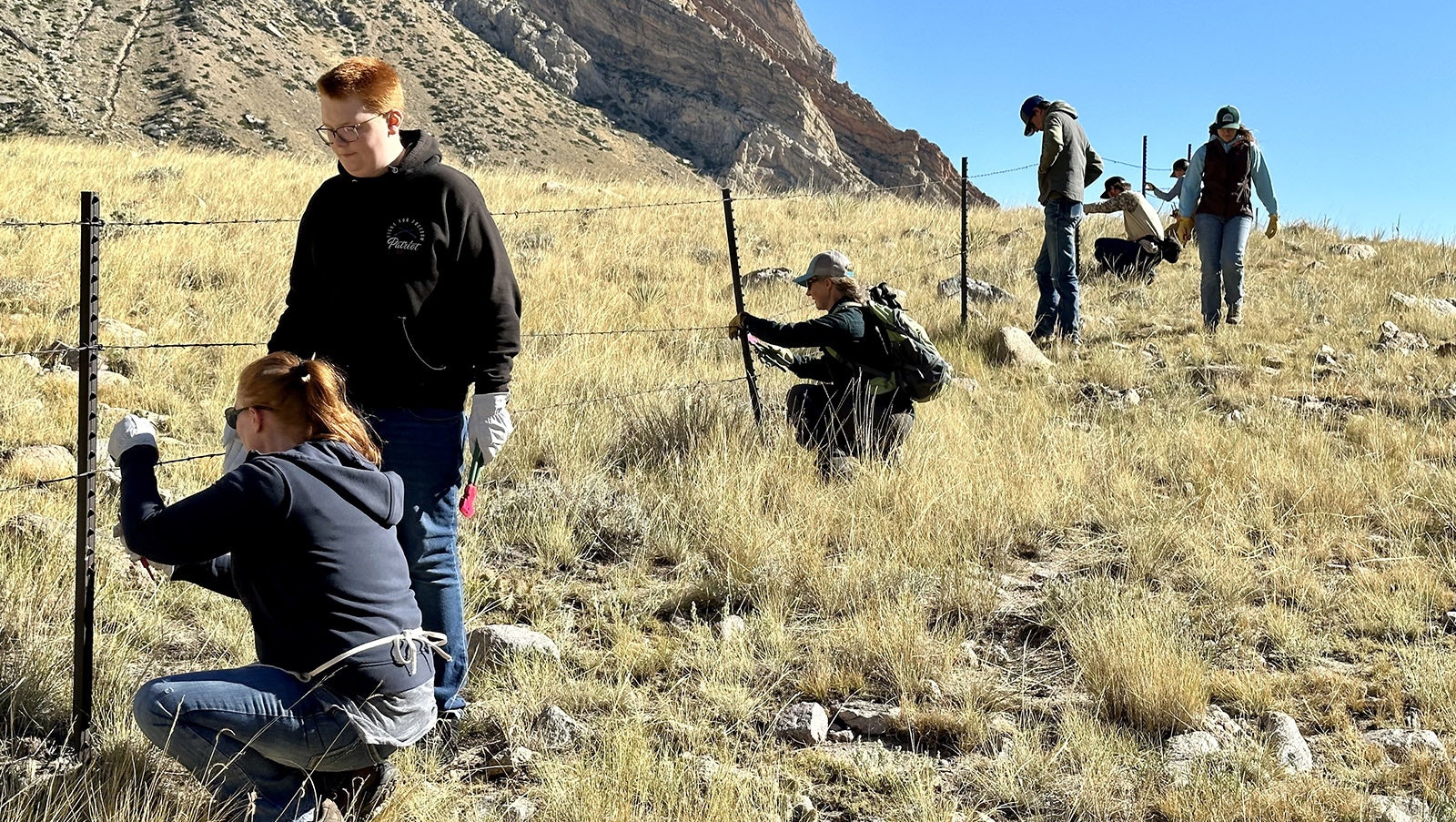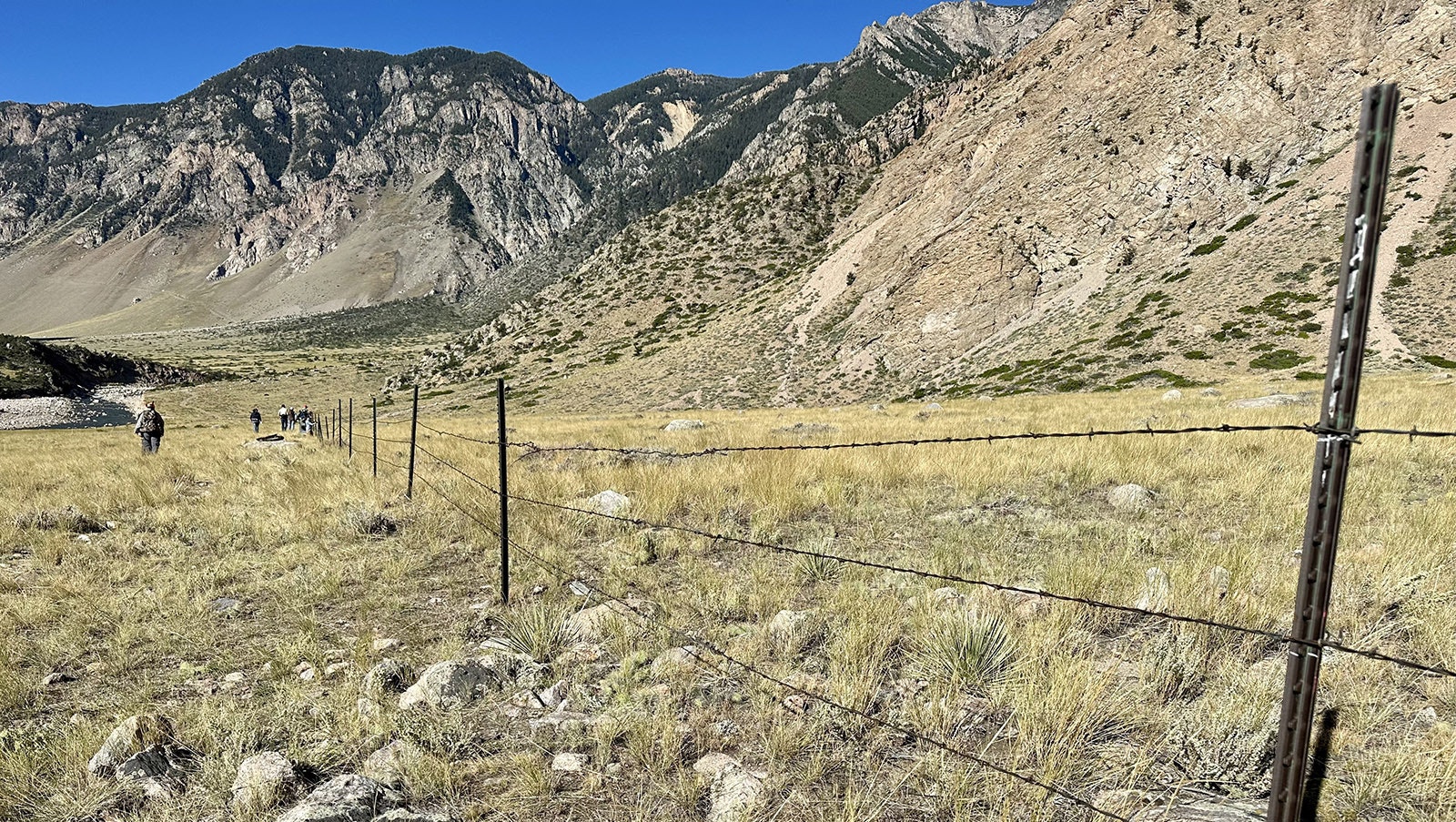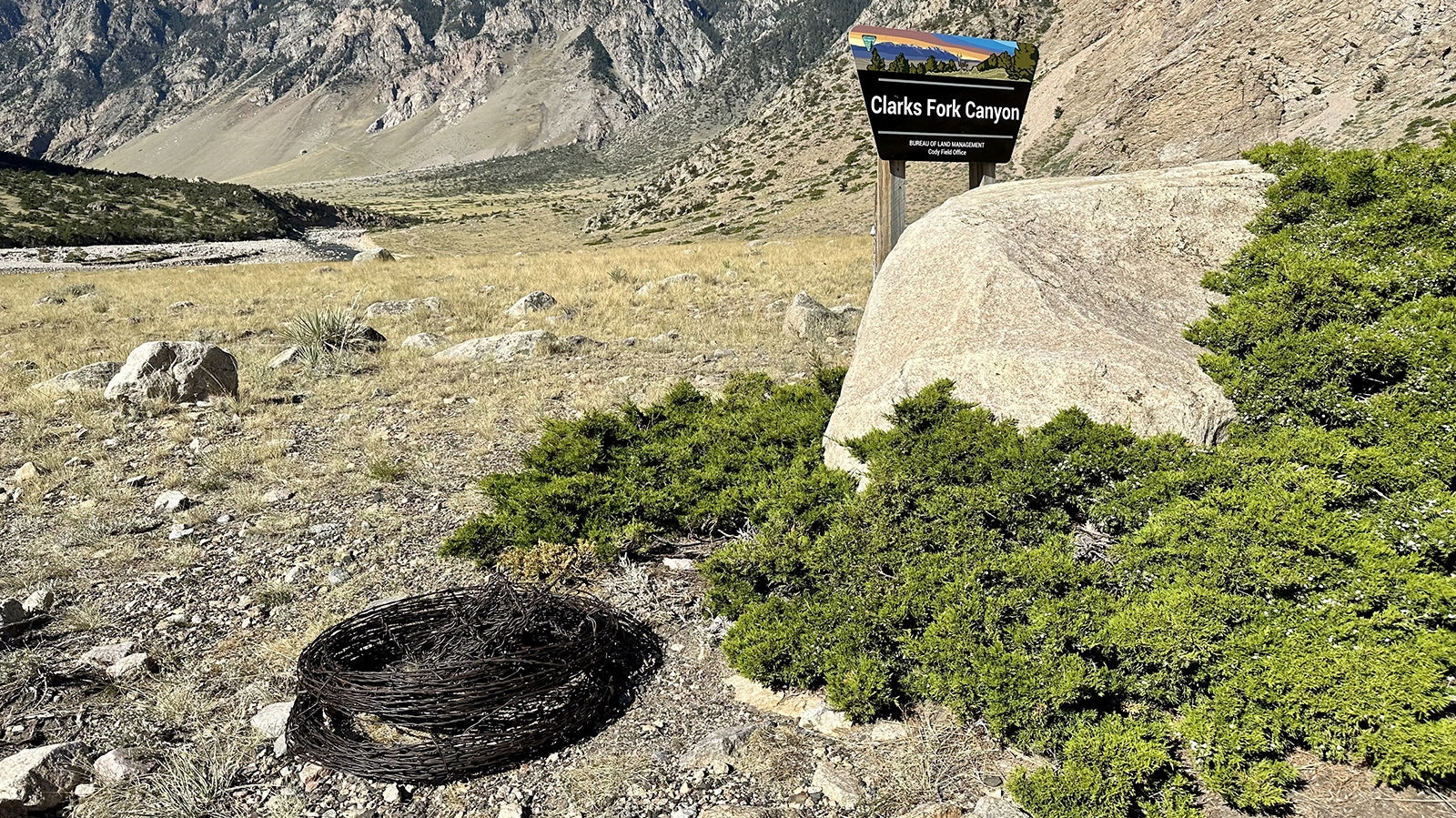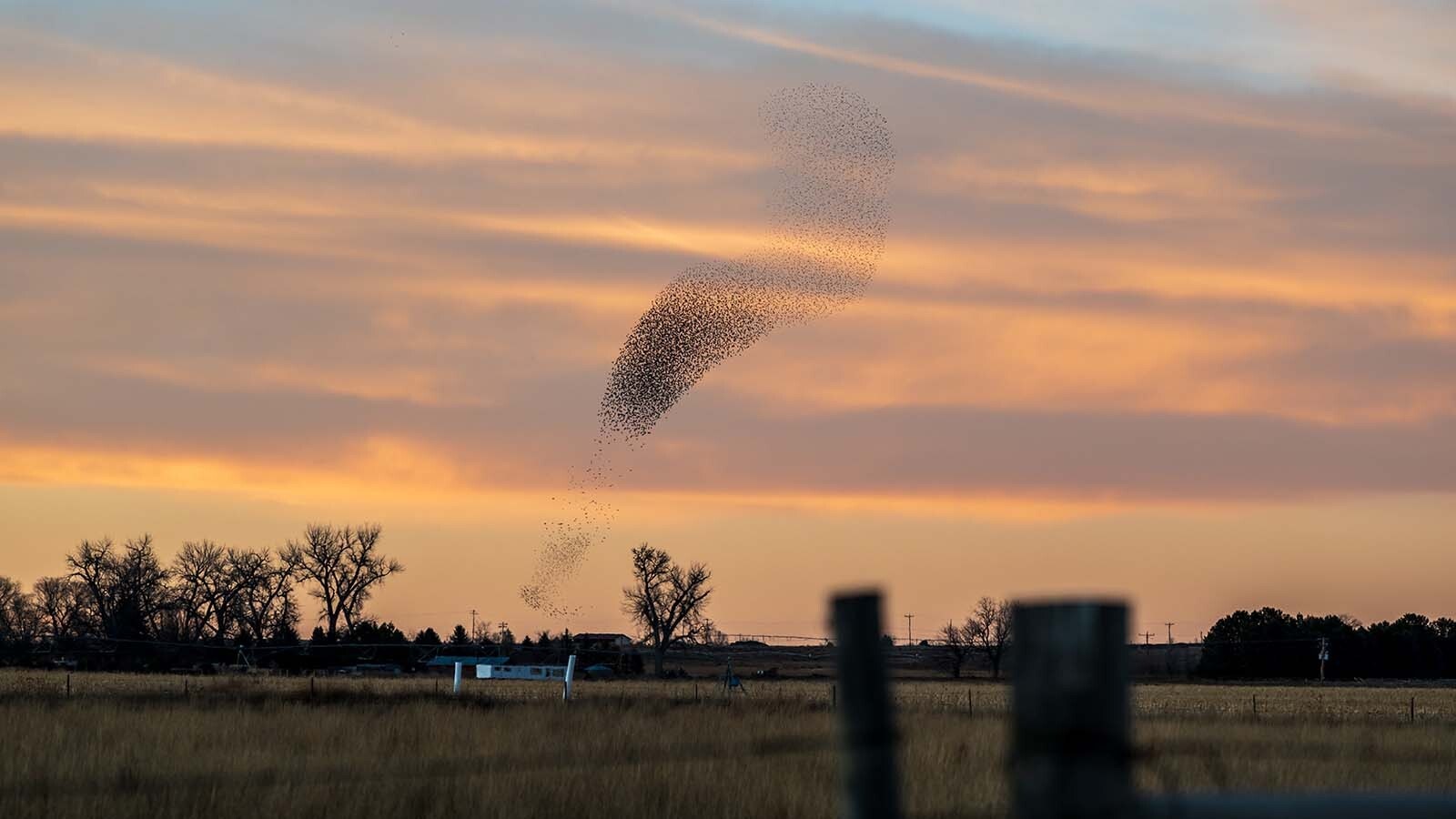Wyoming is making an earnest effort to protect and ensure the survival of its migrating wildlife. But good intentions require hands-on, on-the-ground work to improve or remove the physical barriers preventing these migrations.
Several thousand miles of fences stretched across migration corridors for centuries were built to keep cattle contained. Now, those same fences must be improved to ensure Wyoming’s mule deer, pronghorn antelope, and bighorn sheep can get where they need to go.
That’s why over 60 volunteers gathered in the Clarks Fork Canyon north of Cody on Saturday, Sept. 16. They were celebrating National Public Lands Day a few days early by answering the call of the Absaroka Fence Initiative (AFI) and modifying fencing near the Clarks Fork Canyon parking area.
Volunteers were spaced along an immense expanse of the fence, using metal snipes to remove the top and bottom wires while stretching a new coil of wire along and fastening it into place on each post. The result was a fence more than adequate to keep in cattle but with ample space, above and below, for native wildlife to pass by.
There were plenty of people on hand eager to help. In addition to several BLM personnel, there were volunteers from the Nature Conservancy, the Greater Yellowstone Coalition, and the Draper Museum of Natural History at the Buffalo Bill Center of the West. Several Boy Scouts and Girl Scouts were taking an active hand as well.
So, everyone put on their gloves, went to their posts, and started the process of fence modification.
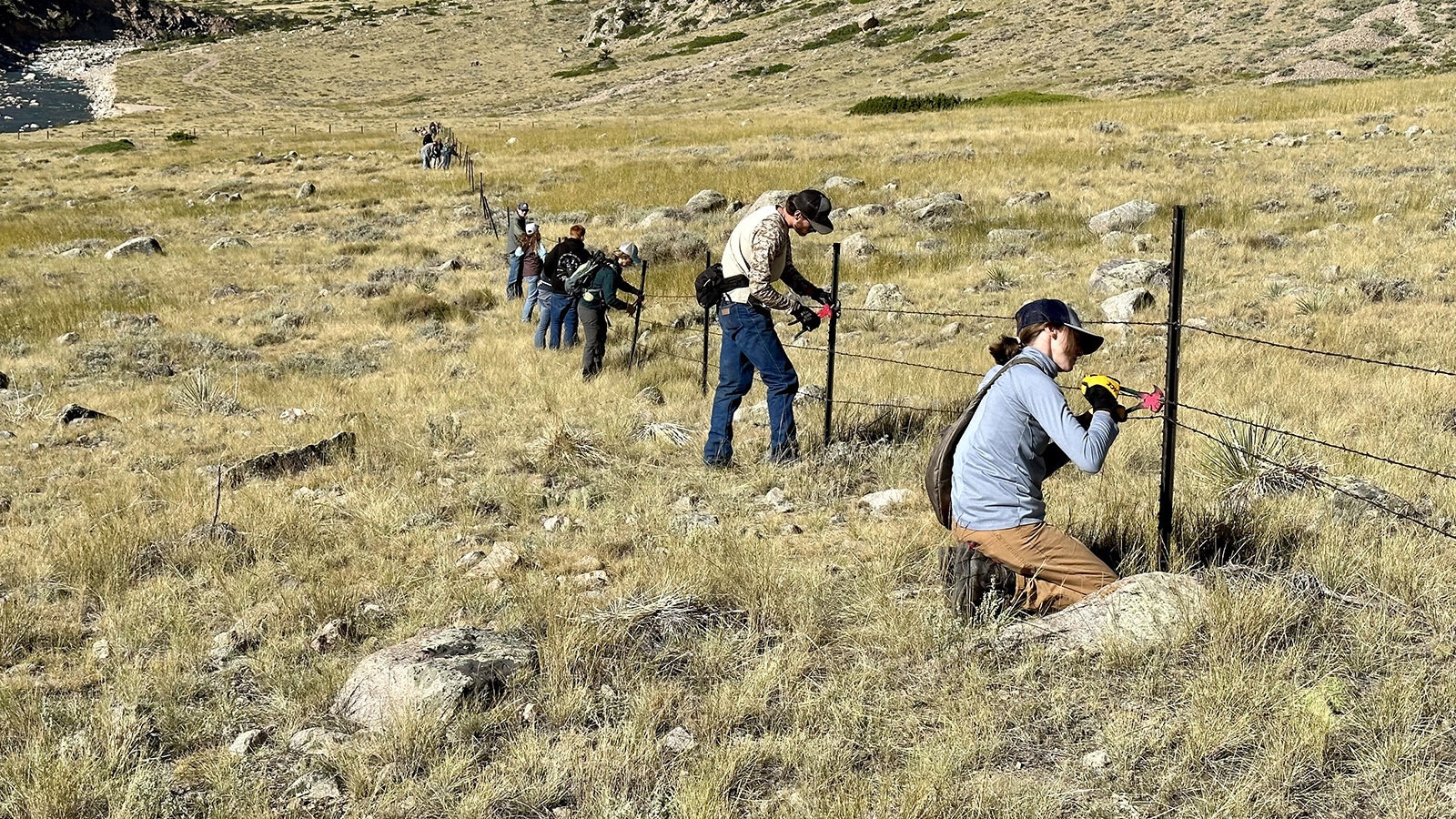
Mending Fences
The Clarks Fork Canyon is a natural funnel for migrating wildlife, with sheer cliffs surrounding the Clarks Fork of the Yellowstone River. It’s a unique area since bighorn sheep use it to access the low country during their migrations.
The fences standing in the Clarks Fork Canyon are “tried and true” and follow the BLM’s handbook for standard fencing seen on rangelands through the West. Five lines of wire stretched between each fencepost, covering the entire stretch from top to bottom with less than a foot of space between each line. Fences like this may have been in place and mostly untouched for more than 50 years.
A standard fence like this is enough to keep any animal contained. But the standard is an immense problem for Wyoming’s native wildlife.
“The fence is too tall and too low. The wire is so low that it’s a struggle for bighorn sheep to go underneath it, and the top wire’s so tall it’s hard for deer and elk to pass. We’re raising the bottom wire so they can travel underneath it and lowering the top wire so it’s a lot easier for any animal that wants to jump,” said Alicia Hummel, a Range Specialist with the BLM Cody Field Office and Chair for the AFI Steering Committee.
It was meticulous work, but the scenery was enough to lift anyone's spirits. A free lunch was waiting for the volunteers, along with a National Public Lands Day t-shirt and an AFI Initiative hat.
By the end of the day, all the fencing surrounding the Clarks Fork Canyon parking area had been modified, in addition to a large stretch of right-of-way fencing on either side. Over two miles of fencing had been improved that morning.

Making Way For Wildlife
The Absaroka Fence Initiative was formed in 2020 to improve fences in Park County and northwest Wyoming. Rather than working separately, several local agencies pooled their resources to “gain more steam” as a collaborative.
Since its inception, over 14 miles of fencing have been removed and another 11 miles modified. This has been accomplished thanks to nearly 2,000 volunteer hours donated during several workdays AFI plans throughout the year.
“It’s a community-driven initiative, and as you can see today, the community’s very supportive of it,” Hummel said.
AFI also gives funding to private ranchers so they can modify or remove fencing on their property.
Hummel discussed one of the workdays in September 2022, when 3 miles of fencing was modified along the Southfork Road south of Cody.
“We were removing wire from cedar posts that had been there since the early 1900s,” she said, “and it hadn’t been altered since then.”
Every area AFI works in is scientifically selected, so even a small stretch of fencing improvement can have a very large impact. Thanks to the collaboration of many local partners, including biologists from Wyoming Game and Fish and the Wyoming Migration Initiative at the University of Wyoming, there’s plenty of data available.
“We try to be strategic about where we’re doing our fence projects,” she said. “Different science is incorporated, like collar data, but we also use the knowledge of local people and incorporate that into our process.”
There’s a long way to go - at least 5,000 miles of fencing has been identified for modification or removal just on BLM land in the area. But Saturday’s progress around the Clarks Fork Canyon parking area was fantastic since it’s used by everything living in the area.
“It’s a natural migration route and such an important area to the public. Today’s project was a win-win,” Hummel said.
The Sept. 16 public workday was the only one scheduled in 2023, but Hummel says AFI plans to have several more in 2024. Anyone interested in becoming a volunteer can learn about and sign up for future public workdays on the Absaroka Fence Initiative website.
Andrew Rossi can be reached at arossi@cowboystatedaily.com.

